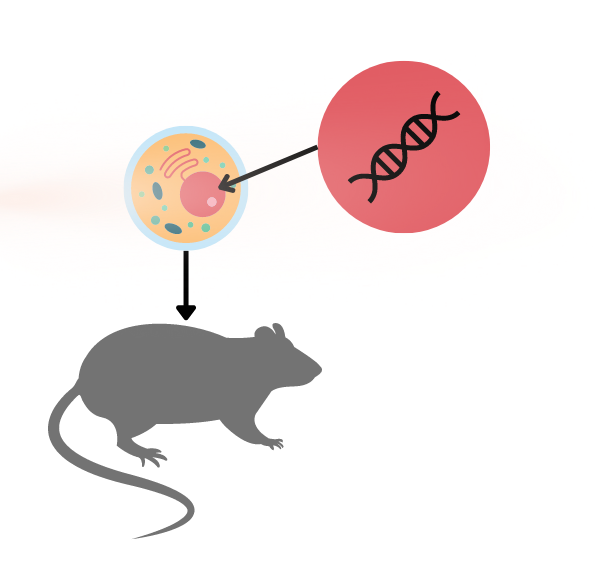
A mouse model is a research methodology where mice are used as experimental subjects to study biological phenomena, investigate diseases, and develop treatments. Mice are often used as a model organism because they share many physiological and genetic similarities with humans.
Mouse models can be created in several ways, including genetic manipulation, chemical exposure, and surgical intervention. For example, researchers can use genetic engineering techniques to create mice with specific mutations or genetic alterations that mimic human diseases such as cancer, Alzheimer's, or cystic fibrosis.
Common Applications
Mouse models are used in a wide range of research areas, including drug development, toxicology, and basic research on various diseases. They can also be used to test the efficacy and safety of potential treatments before they are trialed in humans. Furthermore, mouse models allow scientists to study the underlying mechanisms of disease and test hypotheses, which can help to advance our understanding of complex biological systems and diseases.
Types of Mouse Models
- Inbred mice are genetically identical and have been bred over several generations to reduce genetic variation. They are useful for studying genetic diseases and drug toxicity.
- Outbred mice are genetically diverse and have a wider range of genetic variability than inbred mice. They are employed in studies of complex traits such as behavior and immune responses.
- Hybrid mice are created by crossing two or more inbred strains of mice, resulting in offspring with mixed genetic backgrounds. Studies of complex diseases such as cancers and cardiovascular diseases often require hybrid mice models.
- Immunodeficient mice lack a functional immune system, making them useful for studying infectious diseases, immune system disorders, and developing new therapies.
- Oncology mice are genetically engineered to develop specific types of cancer, such as breast cancer or leukemia, to identify new therapeutic targets, and to test new cancer drugs.
- Humanized mice are created by introducing human genes, tissues, or cells into a mouse’s genome or organs. They are a valuable tool for studying human-specific diseases, immunodeficiencies, and infections.
- Germ-free mice are raised in sterile environments and lack all bacteria, viruses, and other microorganisms. They are necessary in studies focused on the role of the microbiome in health and disease.
- Transgenic mice are created by introducing specific genes into the mouse genome to study the function of genes, their interactions, and their role in disease.
Advantages of Mouse Models
Genetic and Biological Similarities
The mouse genome is 99% similar to the human genome, and mice possess complex biological systems, such as the immune, endocrine, nervous, cardiovascular, and skeletal systems, which are also found in humans. Mice also naturally develop diseases that affect these systems, including cancer and diabetes.
Reproducibility
Mice are small and easy to maintain in controlled environments (e.g. diet and exposure to toxins), leading to reproducible experimental results.
Ease of Breeding
Mice reproduce quickly and their entire life cycle can be studied within only two or three years. This allows researchers to conduct large-scale and long-term studies, providing a more comprehensive understanding of the disease mechanisms and the effects of drugs or environmental factors over multiple generations.
Genetic Manipulation
With modern sequencing and genomic engineering technologies, the precise mutations underlying human disease can be introduced into mice, yielding more accurate and useful disease research data. This level of genetic manipulation is not possible in many other animal models and allows researchers to investigate the precise genetic basis of disease.
Cost-Effectiveness
Mice are relatively inexpensive to house, allowing researchers to conduct large-scale studies with a reasonable budget.
Disadvantages of Mouse Models
Although mice share many similarities with humans, they may not accurately mimic all aspects of human physiology and disease. Therefore, results obtained from mouse models may not always translate to humans.
Human diseases are also often highly complex, involving interactions between genetics, environment, and lifestyle factors. Therefore, mouse models that only capture a single aspect of the disease may not fully represent the complexity of the disease in humans. Mice also lack the genetic diversity found in human populations, and consequently, results obtained from mouse models may not fully apply to humans.
Additionally, different strains of mice may respond differently to experimental treatments or may develop diseases at differing rates, leading to variability in experimental results. Lastly, While mice are considered to be less ethically challenging to use in research compared to larger animals or humans, there are still ethical considerations that need to be taken into account when conducting research on mice.
LIDE delivers innovations in oncology translational research and immuno-oncology. Contact Global Vice President, Josh Caggiula today to learn more about our first-class research capabilities.